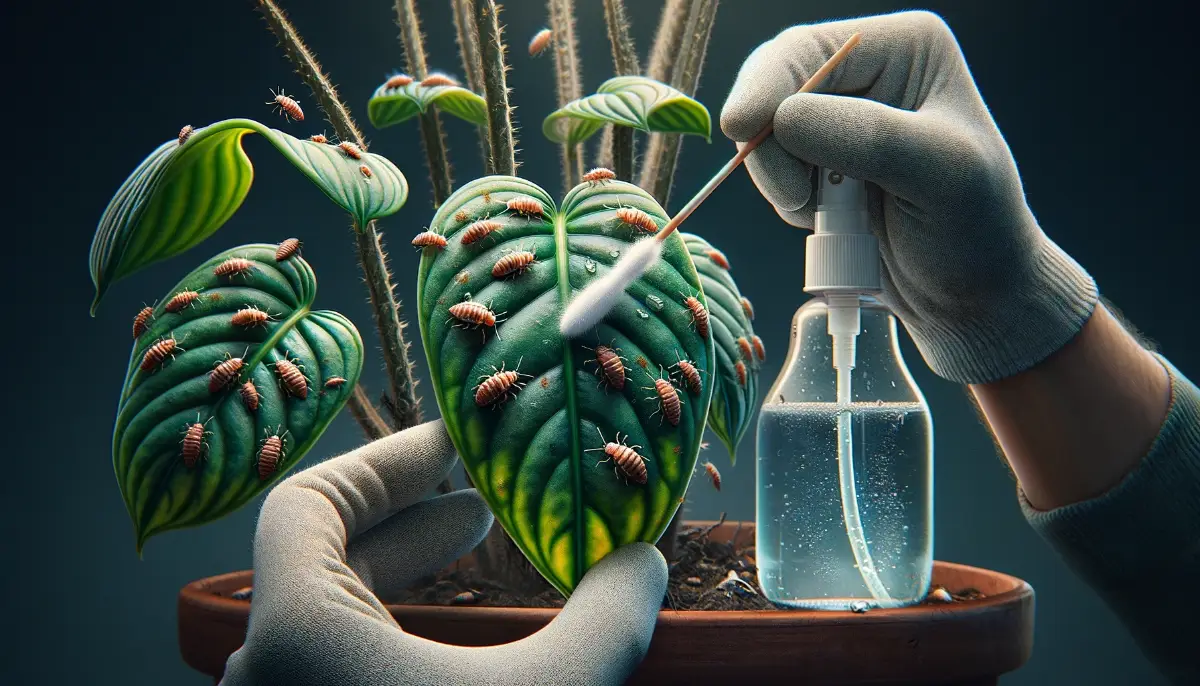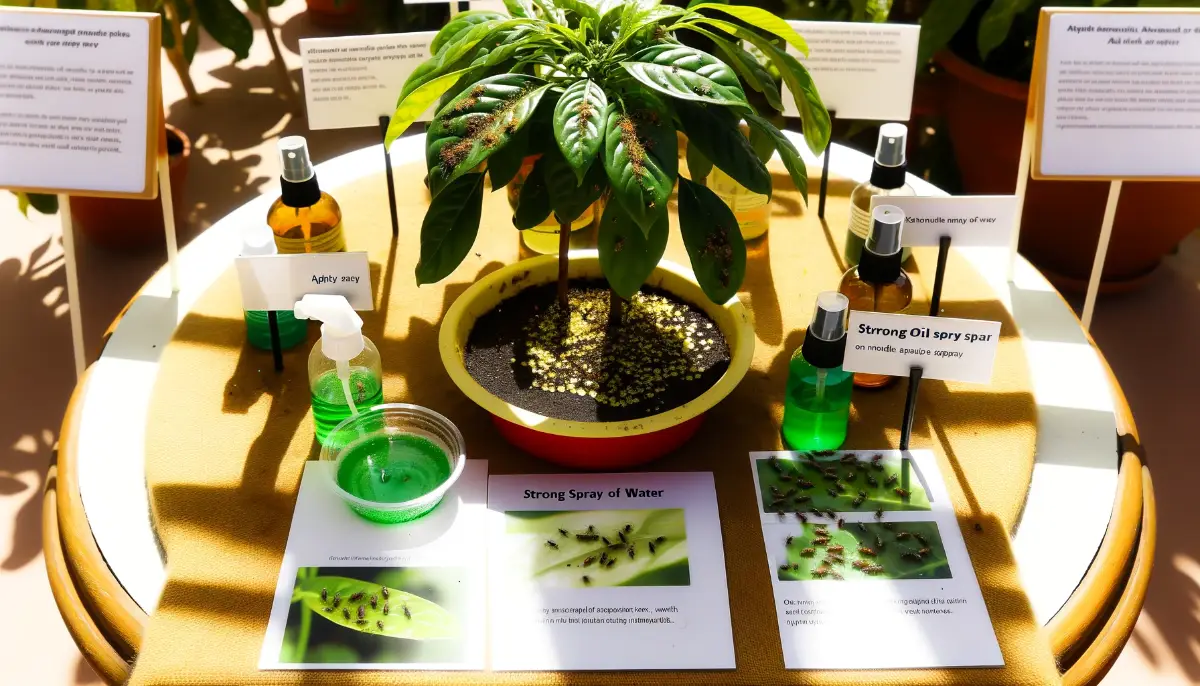Welcome to our battle plan against one of the most stubborn foes your plants may ever face: mealybugs. These tiny pests can wreak havoc on indoor and outdoor greenery, but fear not! With the right approach, you can protect your leafy companions and ensure they thrive. Let’s dive into the strategies and tips to keep your plants healthy and mealybug-free.
- Vigilance in Inspection: Regular checks are crucial to catch infestations early.
- Quarantine New Additions: Prevent the spread by isolating new plants.
- Embrace Natural Solutions: Use biological controls and homemade treatments for a safer approach.
Combatting Mealybugs: Strategies for Prevention and Natural Control
The Enemy Unveiled
Mealybugs, those soft-bodied, wax-coated pests, feast on the sap of plants, weakening and sometimes eliminating them. They’re easy to identify by their cotton-like shelters on the leaves and stems of your plants. Recognizing the signs early is key to preventing widespread damage.
Signs of Invasion
Look for white, fuzzy spots on your plants, a sticky substance known as honeydew, and a general decline in plant health. These invaders are not just unsightly; they’re harmful. Their feeding frenzy can stunt growth and lead to leaf drop.
Prevention is the Key
The first step in mealybug management is prevention:
Inspect Regularly: Catching these pests early can save a lot of trouble down the line.
Quarantine: New plants should be isolated for at least two weeks to ensure they’re pest-free before joining your collection.
Manual and Physical Methods
If you find mealybugs, there are several ways to combat them without reaching for harsh chemicals:
Hand Removal: A tedious but effective method for small infestations.
Alcohol Swabs: Rubbing alcohol on a cotton swab can remove mealybugs on contact. Just dab the bugs lightly.
Enlisting Natural Predators
Nature has its own pest control mechanisms. Introducing natural predators like parasitic wasps and ladybugs can help keep mealybug populations in check.
Chemical-Free Treatments
For those preferring a gentle approach:
Insecticidal Soaps
A solution of water and castile soap can be effective against mealybugs. Spray it directly on the pests and repeat as needed.
Neem Oil
This natural oil works against a wide range of pests, including mealybugs. It’s safe for plants but deadly for pests.
Alcohol Wipe-Down
For a targeted approach, use a cotton swab dipped in rubbing alcohol to wipe down each mealybug you can find. This method is particularly effective for delicate plants where spraying might not be an option.
Water Pressure
A strong jet of water can dislodge mealybugs from the plant, especially in outdoor settings. This method is quick and effective but may need to be repeated for complete eradication.
Special Considerations for Sensitive Plants
Orchid Care
Orchids, with their delicate structures, require careful attention when dealing with pests:
Alcohol Treatment: Spot treat mealybugs with alcohol on a cotton swab to avoid damaging the plant.
Avoid Sprays on Blooms: Do not spray insecticidal soap or neem oil on the flowers, as this can damage them. Focus treatments on the leaves and stems.
Succulent Strategies
Succulents’ thick leaves can harbor mealybugs, making them challenging to treat:
Manual Cleaning: Use a soft brush or cloth dipped in alcohol to gently remove mealybugs from the nooks and crannies of succulents.
Avoid Overwatering: Succulents are prone to root rot, which can be exacerbated by the damp conditions created by some treatments. Ensure your succulents are well-drained and not overly moist.
Persistent Infestations: When to Call It Quits
Sometimes, despite your best efforts, a plant may be too heavily infested to save. In these cases, it’s better to remove and destroy the affected plant to prevent the mealybugs from spreading to healthy plants.
Mealybugs are formidable opponents, but with the right tools and strategies, you can protect your garden and indoor plants from their damage. Remember, the key to success is early detection, proper identification, and consistent application of treatments. By following the tips and methods outlined in this guide, you can ensure your plants remain healthy and vibrant for years to come.
FAQs on Mealybugs: Identification, Prevention, and Control
What are mealybugs?
Mealybugs are small, soft-bodied insects that feed on plant sap. They’re easily identified by their white, cottony appearance. They can cause extensive damage to both indoor and outdoor plants by stunting growth and promoting mold growth through the honeydew they excrete.
How do I identify a mealybug infestation?
Look for white, cotton-like masses on the stems and leaves of your plants, a sticky residue known as honeydew, and a general decline in plant health. These are signs of mealybug presence.
Can mealybugs harm humans or pets?
Mealybugs themselves are not harmful to humans or pets. However, the damage they cause to plants can lead to plant stress and death if not controlled.
What natural predators can control mealybug populations?
Natural predators such as parasitic wasps, lacewings, and the mealybug destroyer (Cryptolaemus montrouzieri) can significantly reduce mealybug populations without harming your plants.
How can I prevent mealybug infestations?
Preventative measures include inspecting new plants before adding them to your collection, isolating new additions for a couple of weeks, and maintaining cleanliness around your plant area to discourage infestations.
What are some effective treatments for mealybugs?
Effective treatments include using a cotton swab dipped in alcohol to directly eliminate mealybugs, spraying plants with insecticidal soap made from distilled water and liquid castile soap, or applying a diluted solution of neem oil.
Can I use chemical pesticides to remove mealybugs?
While chemical pesticides can be effective against mealybugs, they can also be harmful to humans, pets, and beneficial insects. It’s recommended to use safer, natural methods like alcohol treatments, insecticidal soaps, and neem oil as the first line of defense.
How do I treat mealybugs on delicate plants like orchids?
Delicate plants require careful treatment to avoid damage. For orchids, use alcohol on a cotton swab for spot treatments and avoid using sprays on blossoms or buds.
What should I do if my plant is heavily infested with mealybugs?
In cases of severe infestation, it may be necessary to remove and destroy the affected plant to prevent the mealybugs from spreading to healthy plants.
How often should I check my plants for mealybugs?
Regular inspections, at least once every two weeks, can help catch infestations early before they become severe. Pay special attention to new plants and those recently brought indoors from outside.









